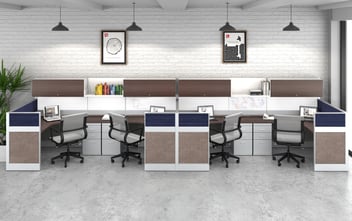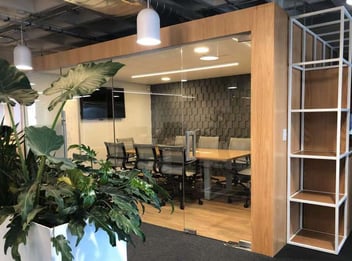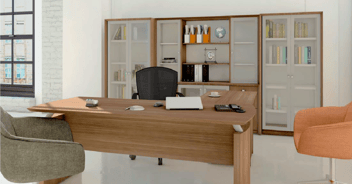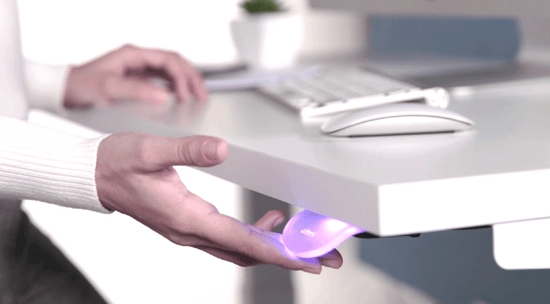Strategies to aid concentration in collaborative office spaces
Achieving concentration in collaborative office spaces means finding a balance between team activities and individual ones through space and tasks organization.
Collaborative offices indeed became the norm due to their multiple benefits; however, what companies like Google discovered is that the key to making collaborative environments was actually to maintain concentration levels of the workers, while numerous distractions were commonplace in the office.
Here we tell you about five key strategies that could also generate exciting results for your company.
Assessing the distribution of space
Individual work is essential, but collaboration is a factor capable of generating a vital synergy; however, when it comes to productivity, the need to maintain concentration also in a group work environment is often not given enough importance, as has been widely documented by studies such as those carried out by the Gensler Research Institute.
In fact, with this research and the implementation of open offices in large companies, it was concluded that these two types of activity are the main ones in today's offices: individual work that requires great concentration, and collaborative tasks, although the latter sometimes quickly lose priority.
This can become absolute chaos, as companies such as Google found that having multiple groups collaborating in the same area also generated significant distractions at the group level, resulting in a loss of productivity.
This is why they adopted a collaborative office model, where the essential axis -apart from the individual work areas- were the sections destined to work in small groups.
Of course, space is a limited resource, so Google implemented an "area budget" system, a certain amount of available physical space. A modular meeting environment provided by the company can be set up. "As long as it is deployed, the room belongs to the team. If for some reason the team no longer needs the room, it is removed," as Gary Keene, COO of Google Engagement, states.
Flexibility became one of the qualities to make the best use of space and get the most out of collaborative work. Through quality, easy-to-assemble modular stations, facilities for particular tasks can be set up very quickly.
Of course, this can be done at each company’s pace; daily, weekly, monthly, etc. To distribute the spaces, to have available workrooms, with the ideal furniture for the type of activity to be carried out, became an effective formula so that the function of a collaborative office is fulfilled in a perfect and focused way.
Act based on the different activities of your staff.
The needs of a group that is going to meet to brainstorm ideas are not the same as those who are going to make an analysis or elaborate a model, a diagnosis, those who are going to discuss a problem, or those who are looking to define a project or work plan.
Having a good set of multimedia hubs, chairs, configurable tables, and modular stations allows to efficiently transform collaborative offices so as not to lose focus on technical difficulties.
Of course, if done as in Google, where the room is requested and prepared in advance, it will be even more efficient office work. "We have supplied modular meeting rooms that we can set up and redeploy very quickly," Keene stresses to underline the advantages of flexibility.
Separation of groups
Of course, not all types of companies have the capabilities of a global corporation. Even if they do not have built areas that allow permanent fixtures to enable reconfiguration, Some tools expedite this conversion cost-effectively.
For example, it is possible to partition rooms with precise positions and dimensions through office partitions, which can also be easily removed or adjusted.
And there are also modular systems, with additional panels, which allow you to maintain a higher level of isolation for each work area.
Each team can better focus on their work. No expensive construction is required; a relatively small investment is needed to obtain the furniture to improve collaborative offices’ dynamics.
Ambient noise level
Different types of padding may be required for different types of activity.
Jenny Hicks, Chief Technology Officer at Midwich, highlights the need to reduce noise pollution in the workplace vicinity as one of the keys to promoting distraction-free performance in meeting spaces.
The implementation of unique booths for video conferencing tasks, combined with modular systems, can allow a more efficient concentration in those tasks that require it.
Minimizing distractions
Although surveys show that most people consider that they are more productive when they have their smartphone at hand, not all companies fully agree.
According to recent studies by RescueTime, not 6 minutes go by without workers checking their email or taking a look (or more) at their social networks.
For this reason, many companies implement mechanisms to limit personal activity on mobile devices; the most drastic ones even place stations to leave the devices before entering the office or electronically restrict access to specific entertainment platforms.
However, the trend is not being too strict with these regulations unless full concentration is required for a limited time or due to security issues. A quick email check can be a mental break, making a worker more effective.
Don't forget about comfort
Of course, considering the ideal type of seating for each area is also essential.
If the team members spend several hours in the same space, it will be useful to consider at least semi-executive chairs; or if they need flexibility and movement in the place, the task chairs can also represent a good alternative.
Making a comprehensive diagnosis of your offices’ state and assessing the different strategies and alternatives available will allow you to build a more reliable path towards a collaborative office model that remains truly focused, efficient, and affordable.





